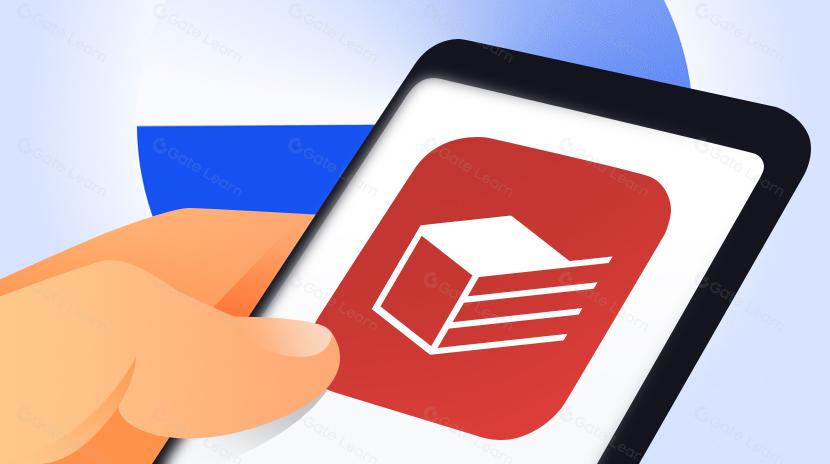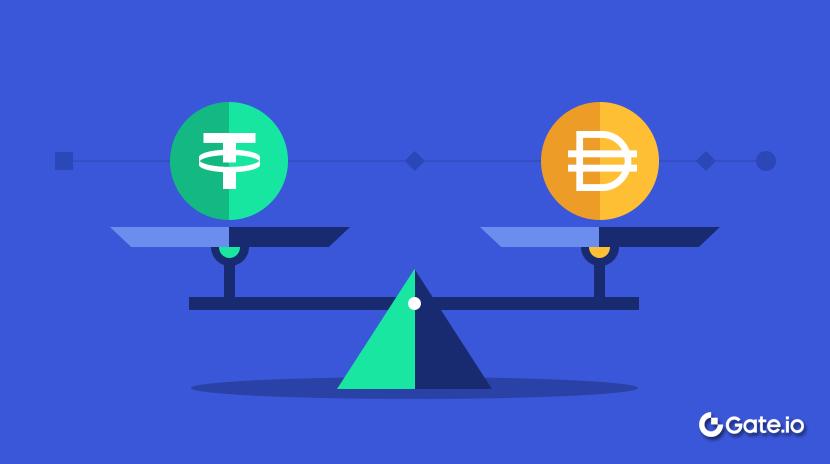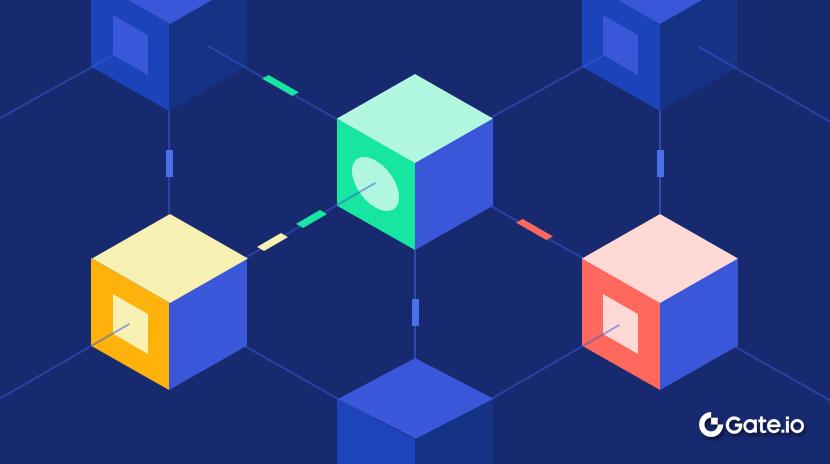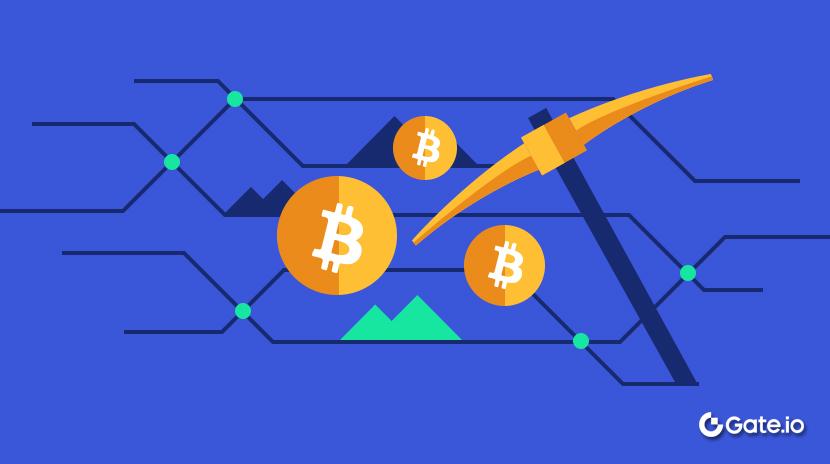Những chàng trai Flash của Blockchain: Chi phí ẩn của việc trì hoãn
Chuyển tiêu đề ban đầu ‘Flash Boys of Crypto’
Bạn sẽ cảm thấy thế nào nếu tin nhắn WhatsApp của bạn mất 10 giây để có được dấu tích màu xanh, và bạn phải đợi 10 giây để câu trả lời từ bạn đến bạn? Đúng là khó chịu phải không? Chào mừng bạn đến với điểm đau lớn nhất của blockchain: độ trễ trong giao tiếp chưa được giải quyết.
Blockchain không phải là về tiền bạc chút nào - chúng là về giao tiếp. Những gì chúng ta cảm nhận là “chuyển giá trị” thực sự là một vấn đề trao đổi thông tin. Trong khi một số blockchain như Bitcoin thực sự di chuyển đồng tiền, những cái khác như ETH hoạt động khác biệt. Khi bạn gửi 5 ETH cho bạn bè, bạn không phải di chuyển đồng tiền kỹ thuật số; bạn đang phát sóng một thông điệp cập nhật sổ cái phân tán. Sự đổi mới thực sự của blockchain không chỉ là khái niệm “tiền điện tử”, mà là một phương pháp mới đồng bộ thông tin trên các mạng không tin cậy.
Các gói giá trị được lưu trữ trong các gói thông tin IP chuyển tiếp qua các đường ray internet toàn cầu. Phương pháp tương tự áp dụng ngoài các mạng blockchain.
Khi Taylor Swift tung vé concert mới nhất, hàng nghìn fan lao vào máy chủ của Ticketmaster, mỗi người gửi một gói tin la hét, ‘Cho tôi một vé!’ Hệ thống xếp hàng chờ theo thời gian đến, và ai gửi gói tin đến trước sẽ thắng. Xác định thứ tự đến rất quan trọng để phân phối công bằng.

Các công ty công nghệ như Amazon và Facebook hiểu rằng việc phụ thuộc vào đường truyền internet công cộng để cung cấp loại trải nghiệm và hiệu suất mà người dùng muốn trên toàn thế giới là không thể. Thời gian mà một yêu cầu video bắt nguồn từ Luân Đôn đến máy chủ của họ tại Mỹ và truyền dữ liệu video trở lại qua khoảng cách vật lý gây thêm độ trễ cho trải nghiệm.
Đó là lý do họ thiết lập trung tâm dữ liệu toàn cầu nơi dữ liệu máy chủ được sao chép định kỳ trên các trung tâm này và người dùng được kết nối với trung tâm dữ liệu gần nhất để giảm độ trễ thấp. Meta vận hành 24 trung tâm dữ liệu trên toàn cầu, đầu tư hơn 30 tỷ đô la để đảm bảo cuộn Instagram không ngừng mượt mà và phản hồi, duy trì độ trễ siêu thấp cho hàng tỷ người dùng.
Blockchain đang trải qua sự chuyển đổi tập trung vào việc cung cấp trải nghiệm đáng tin cậy và thân thiện với người dùng. Mặc dù họ đã xác định họ là hệ thống chuyển giá trị, người dùng biết rằng tương tác với những nền tảng này khá đau đớn. Khi Trump ra mắt memecoin riêng của mình vào tháng 1, hơn 200k người dùng cùng lúc đổ xô tham gia, làm quá tải mạng Solana, dẫn đến nhiều giao dịch thất bại và khiến nhiều người tham gia sớm thất vọng.

Tại sao Solana thả gói tin trong khi Ethereum đợi
Ethereum và Solana minh họa các cách tiếp cận khác nhau để giải quyết “vấn đề giao tiếp” của blockchain. Blockchain phụ thuộc vào các validator—một mạng lưới các nút phần cứng chuyên dụng chịu trách nhiệm thu thập giao dịch, thực thi chúng để xác minh tính đúng đắn và tổ chức chúng thành các khối. Tùy thuộc vào cơ chế đồng thuận, validator có quyền xây dựng một khối và khi một giao dịch là một phần của một khối được cam kết trên chuỗi, nó được xem là đã giải quyết.
Phương pháp “Xếp hàng” của Ethereum: Thời gian khối chậm hơn của Ethereum (12-15 giây) cho phép đủ thời gian để tin nhắn lan truyền trên mạng của nó. Các giao dịch nhập vào một mempool—một phòng chờ—nơi các validator chọn lựa, sắp xếp và xử lý giao dịch một cách có hệ thống, đảm bảo độ tin cậy hơn là tốc độ. Phương pháp này ưu tiên độ chắc chắn của giao dịch nhưng với chi phí là trải nghiệm người dùng và phí gas.
Triết lý “Rủi ro mất gói tin” của Solana: Solana thách thức giới hạn với thời gian khối 400ms, ưu tiên tốc độ mạnh mẽ. Tuy nhiên, tốc độ cực kỳ này có nghĩa là gói tin thường xuyên bị mất nếu độ trễ mạng vượt quá cửa sổ thời gian chặt chẽ của Solana, dẫn đến thất bại giao dịch và không ổn định mạng trong thời gian cao điểm. Solana không có bộ nhớ tạm, vì vậy người dùng sẽ cần phải thử lại cho đến khi nó đạt đến bộ xác minh.

Người xác thực đối mặt với một vai trò kép phức tạp - đồng thời hoạt động như các trung tâm giao tiếp (nhận và phát sóng giao dịch) và các nút tính toán (thực thi và xác thực giao dịch). Người xác thực Ethereum phân bổ tài nguyên của họ chủ yếu vào tính toán, với đủ thời gian cho việc giao tiếp. Ngược lại, người xác thực Solana phải xử lý nhiệm vụ tính toán cao cấp và đòi hỏi phần cứng mạng nặng nề.

Xác thực Hai Bước: Tưởng Tượng Lại Đường Ống
Khi các mạng blockchain tiến triển, hai hướng đi riêng biệt đang nổi lên để giải quyết vấn đề chận truyền thông.
Đường dẫn 1: Phần mềm-Driven Pre-Confirmations (MegaETH)
MegaETH, một giải pháp Layer 2, nhằm mang đến trải nghiệm web3 ‘thời gian thực’ bằng cách cung cấp các ‘xác nhận trước’ nhanh chóng — sự đảm bảo rằng giao dịch sẽ được bao gồm trong khối tiếp theo. MegaETH đạt được điều này bằng cách chia trách nhiệm qua các nút chuyên biệt:
Sequencer: Phần cứng mạnh mẽ xử lý việc thực hiện giao dịch ở cấp độ hiệu suất
Full Nodes: Một mạng lưới phân cấp của các nút chịu trách nhiệm kiểm tra kép các khối được tạo ra bởi bộ xếp
Provers: Các nút tập trung vào tạo ra chứng minh giao dịch có thể được xác minh bởi các máy khách nhẹ
Tất cả giao dịch được định tuyến đến bộ sắp xếp hiệu suất cao mà gói giao dịch thành các khối mỗi giây. Tuy nhiên, người dùng thường đòi hỏi xác nhận nhanh hơn ngay lập tức như trong trường hợp chơi trò chơi trên chuỗi hoặc giao dịch DEX. Bởi vì MegaETH chỉ sử dụng một bộ sắp xếp thay vì một mạng lưới các nút, nó có thể phát ra ‘xác nhận trước’ ở các khoảng cách 1ms.
Trình xếp hạng xây dựng ‘mini khối’ - gói giao dịch đã xử lý mỗi 10 ms và cung cấp xác nhận bao gồm. Ứng dụng có thể xử lý chúng như các giao dịch đã được xác thực, hiển thị kết quả trên mặt trước mà không cần chờ đợi việc sản xuất khối hoàn chỉnh và thêm vào chuỗi.

Nguồn -https://x.com/ShivanshuMadan/status/1902388855862640664
Bộ xử lý MegaETH hoạt động trên phần cứng mạnh mẽ: 100 nhân, RAM 1-4TB và băng thông mạng 10Gbps. Dữ liệu Blockchain đặt ở bộ nhớ CPU thay vì ổ đĩa lưu trữ chậm hơn, và quá trình xác minh phân tán trên nhiều nhân, nhằm mục tiêu vượt qua 100.000 giao dịch mỗi giây.
Sự phụ thuộc vào một bộ phân loại trung tâm của kiến trúc này đúng là đem lại những sự đánh đổi về sự tin cậy. Nếu bộ phân loại gặp sự cố, xác nhận giao dịch có thể phải đối mặt với sự chậm trễ cho đến khi các hệ thống dự phòng kích hoạt. MegaETH giảm thiểu rủi ro này bằng cách sử dụng một mạng lưới các nút đầy đủ thực hiện lại mỗi giao dịch, xác minh tính chính xác của bộ phân loại. Các bộ phân loại phải đặt cược thế chấp dưới hình phạt cắt giảm nếu có hành vi không đúng.

MegaETH đã ra mắt mạng thử nghiệm công cộng của mình vào tháng trước và gặp vấn đề gián đoạn. Mặc dù có vẻ như là một lỗi máy xếp hàng, nhưng hung thủ thực sự là một lỗi RPC ngăn chặn giao dịch đến máy xếp hàng.
RPC (Remote Procedure Call) là một phần mềm trung gian cho phép ứng dụng tương tác với các nút blockchain và gửi/nhận giao dịch mà không cần chạy một nút riêng của họ. Đáp lại, nhóm MegaETH đang phát triển một ngăn xếp RPC hiệu suất cao có khả năng phù hợp với yêu cầu về tốc độ của họ.

Đường dẫn 2: Hàng đầu do hạ tầng kích hoạt (Giao protocal DoubleZero của Solana)
@doublezerođang xây dựng “Flashboys cho Solana.” Trong cuốn sách bán chạy nhất của mình Flashboys, Michael Lewis đã viết về cách các công ty giao dịch tần suất cao (HFT) đã chi 300 triệu USD để trải một đường sợi quang giữa Chicago và New York để có lợi thế giao dịch 4 ms — minh họa cho sự quan trọng của độ trễ cực thấp trong môi trường đòn bẩy cao.
Dưới sự điều hành của Austin Federa, người trước đây làm việc tại Solana Foundation, dự án này phát triển từ công việc hợp tác với nhóm Firedancer, các nhà phát triển của Solana’s high-performance validator client. Federa nhận ra rằng, trong khi Firedancer lý thuyết có thể xử lý hàng triệu giao dịch mỗi giây, việc mở rộng hiệu suất như vậy trên hàng ngàn nút trên internet công cộng đặt ra những thách thức đáng kể.
Lấy cảm hứng từ cách các công ty giao dịch tần suất cao tận dụng các đường dây sợi quang riêng để giảm thiểu độ trễ, DoubleZero đang xây dựng một DEPIN (Mạng Hạ tầng Vật lý Phi tập trung) bao gồm các liên kết sợi quang không sử dụng. Các công ty mạng đóng góp khả năng thông lượng rộng lớn không sử dụng và kiếm phần thưởng, với các giao dịch được định tuyến qua hạ tầng dành riêng này đến các máy chủ xác minh trên toàn thế giới.

Giao thức có kiến trúc hai vòng :
- Vòng ngoài (Ingress/Egress): Phần cứng dành riêng tại các rìa mạng lọc lưu lượng vào, giảm thiểu các cuộc tấn công DDoS (Tấn công từ chối dịch vụ phân tán), xác minh chữ ký và loại bỏ giao dịch trùng lặp trước khi chúng nhập vào mạng lõi.
- Vòng trong (Luồng Dữ liệu): Các giao dịch đã được lọc được định tuyến qua băng thông dành riêng cho tập hợp toàn cầu của các máy chủ xác thực Solana.

Hiệu quả, DoubleZero giới thiệu một mempool vào mạng Solana từ đó các validator có thể lấy các giao dịch. Lớp lọc phần cứng ban đầu giảm spam, cho phép các validator Solana tập trung năng lực xử lý vào các giao dịch hợp lệ, tạo ra giá trị.
Lịch sử, blockchain có phí thấp như Solana đã dễ bị tấn công từ chối dịch vụ do chi phí tối thiểu của rác mạng. Như vậytấn công, thường được điều khiển bởi bot, đã được các đối thủ tung ra để làm gián đoạn các nền tảng và thậm chí gây ra sự cố mạng toàn diện trên nhiều chuỗi.
Để giải quyết vấn đề này, DoubleZero tận dụng các Mảng Cổng Lập Trình Được (FPGAs) - các vi chip chuyên biệt vượt trội trong xử lý song song so với CPUs truyền thống, xử lý các nhiệm vụ tổng quát tuần tự. Các FGPAs này được lập trình lại để xử lý hiệu quả các nhiệm vụ cụ thể như xác minh chữ ký trước khi giao dịch được định tuyến sâu hơn vào mạng.
Tối ưu hóa này giảm tải tính toán cho các máy chủ xác thực, thường mất đến 70% thời gian xử lý để xác minh chữ ký thay vì xây dựng khối mới. Nhóm dự định hỗ trợ nhiều mạng khác ngoài Solana, bao gồm Aptos, Celestia, Sui và Avalanche, với mục tiêu ra mắt mạng chính vào cuối năm 2025.

DoubleZero đang thử nghiệm một cơ chế thưởng cóp nhận cơ sở hạ tầng dựa trên cải thiện hiệu suất so với tiêu chuẩn internet công cộng, khuyến khích đóng góp cơ sở hạ tầng chất lượng cao để tăng cường sự kiên cố của mạng toàn cầu.
Mặc dù có lo ngại hợp lệ rằng tầng này có thể trở thành một điểm nghẽn tập trung, các ứng dụng có thể kết nối trực tiếp với các máy chủ Solana thông qua các tuyến đường internet công cộng. Việc đặt cọc trong DoubleZero chủ yếu phục vụ như tài sản đảm bảo an ninh chống lại các hành động độc hại thay vì ảnh hưởng đến quyết định về định tuyến lưu lượng.
Đến Các Khả Năng Mới trong Trải Nghiệm Người Dùng

Để blockchain đạt được sự thông dụng chính thống, trải nghiệm phải được thực hiện một cách mượt mà. Các giao dịch cần phải cảm giác như việc gửi một tin nhắn văn bản hoặc quẹt thẻ tín dụng - nhanh chóng và đáng tin cậy.
Tính cuối cùng của giao dịch dưới một giây không chỉ cải thiện các ứng dụng blockchain hiện tại mà còn mở khóa hoàn toàn các danh mục mới trước đây không thể. Nếu chúng tôi muốn yêu cầu các start-up trong lĩnh vực này, đây là những gì chúng tôi đang nghĩ về -
Hạ tầng tài chính thời gian thực: Market making tần suất cao cho tài sản trên chuỗi và truyền thống, hệ thống môi giới có thể xử lý giao dịch ngoại hối 24/7 cho các tổ chức.
Ứng dụng DApps Hợp tác Thời gian thực: Ứng dụng đa người chơi như trò chơi và mạng xã hội tài chính với độ trễ tối thiểu.
Cơ sở hạ tầng của Nhà phát triển: Dịch vụ tối ưu hóa hàng đợi giao dịch, quản lý mempool và ưu tiên trên nhiều chuỗi.
Cơ sở Hạ tầng Truyền thông Tiên tiến: Các mạng phân phối nội dung Blockchain tối ưu hóa việc truyền tải dữ liệu và giao dịch.
Đấu giá Web2 minh bạch: Rất nhiều ứng dụng web2 như Google Ads sử dụng máy chủ tập trung, những điều này có thể được chuyển sang chuỗi cho sự công bằng và trung thực.
Miễn trừ trách nhiệm:
- Bài viết này được sao chép từ [ Decentralised.Co]. Chuyển tiêu đề ban đầu ‘Flash Boys of Crypto’. Tất cả bản quyền thuộc về tác giả ban đầu [Decentralised.Co]. Nếu có bất kỳ ý kiến phản đối nào về việc tái in này, vui lòng liên hệ với Cổng Họcđội, và họ sẽ xử lý nhanh chóng.
- Tuyên bố từ chối trách nhiệm: Các quan điểm và ý kiến được thể hiện trong bài viết này chỉ là của tác giả và không hề cung cấp bất kỳ lời khuyên đầu tư nào.
- Đội ngũ Gate Learn thực hiện việc dịch bài viết sang các ngôn ngữ khác. Việc sao chép, phân phối hoặc đạo văn những bài viết dịch là không được phép trừ khi được đề cập.
Bài viết liên quan

Tronscan là gì và Bạn có thể sử dụng nó như thế nào vào năm 2025?

Coti là gì? Tất cả những gì bạn cần biết về COTI

Stablecoin là gì?

Mọi thứ bạn cần biết về Blockchain

HODL là gì


